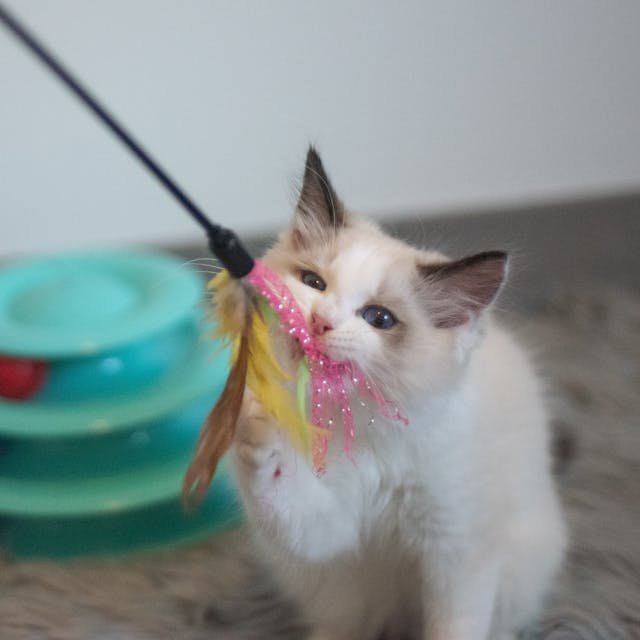Sepia Ragdoll In 2025
It is common for Sepia Ragdolls to have darker coats than their mink Ragdoll siblings. Ragdolls have the thickest, plushest, and softest coats than other pointed ragdolls. In contrast to traditional and mink coats, sepia have pointed ears, faces, feet, and tails, but their bodies are darker. Sepia Ragdolls can have green, gold, blue, aqua blue, or a rainbow of other eye colors, rather than only aqua blue eyes like mink Ragdolls. These ragdolls usually have aqua or green eyes.

What Is a Sepia Ragdoll?
The Sepia Ragdoll’s coat is naturally dark and richly colored and will deepen in color over time. Their fur is considered the softest, much like cashmere or rabbit fur. Sepias carry two color genes, resulting in a darker coat color. It is due to the Sepia Ragdoll’s double Mink gene that it is so dark. Sepia Ragdolls’ coats are also usually prettier than Mink Ragdolls’. They have several color variations, such as lynx, bicolor, pointed, mitted, and solids.
Are they still called Ragdolls? Like all other ragdolls, they are also registered with TICA. What color are their eyes? They may have green eyes, orange (amber), golden, or even aqua (rare).

How Rare Are These?
Compared with other ragdolls, sepia ragdolls are “very rare.”
Ragdoll Blues provides a great cuttlefish guide on the sepia ragdoll cat. These ragdolls inherit 1 Burmese gene from each of their parents, which creates the sepia color.

Facts & Features about Sepia Ragdolls
These ragdolls have thicker, deeper-colored coats than others, making their coats lovely to stroke! In addition to requiring more grooming, thicker coats require more care. As a ragdoll cat, Teddy gets brushed at least twice a week, and we’ve tried many combs before finding the one best suited to his fur type.
They have distinct color points, which means their ears, faces, paw pads, and tails are much darker and more pronounced. Their color points contrast beautifully with their lighter bodies.
Ragdoll cats usually have blue eyes, but this type of Ragdoll can have green or blue eyes.
Like other ragdoll cats, sepia ragdolls are large and muscular, typically weighing 10–20 pounds.
Like most ragdolls, cuttlefish are known for their gentle, affectionate natures, making them excellent companions.

Sepia Ragdoll Cat Types
The different types of sepia ragdolls can be confusing. While researching this topic, I found some information confusing, but it’s essential to remember that the sepia element refers to their fur color and tone. Only two mink ragdolls can have sepia ragdolls, and the’mink’ refers to the type of fur they possess. These ragdoll cats are available in two different types.
Ragdolls with sepia color points
Ragdolls with sepia colors have a uniform body color, while their points (ears, faces, paws, and tails) are deeply colored. A sepia-mitted ragdoll has no white in its coat, unlike a sepia-mitted ragdoll.
Seal sepia ragdolls
Seal ragdolls, also known as sepia color points, can be lighter in color than Teddy. Color points and seals are terms applied to the darker points of a ragdoll’s body.



Ragdolls With Mittens

They have the cutest little white points on their paws or mittens, which give them their name. White markings may also be seen on ragdolls with sepia MIT under their chins, chests, and elsewhere.
Grooming Process

There are many variations in the colors and patterns of a cat’s coat; the descriptions above are just a few examples. Ragdoll kittens’ coloration can change as they mature. There are numerous variations in the colors and patterns of a cat’s coat. The given descriptions offer only a few examples. As Ragdoll kittens grow, their coloration may change and become more prominent. Ragdoll cats may require more frequent grooming with a special brush designed for Ragdolls. Ragdoll cats are elegant and charming companions, bringing warmth, love, and magic to one’s life. Thank you for reading this guide.
FAQ
1. Sepia Ragdolls: What are they?
Ragdolls with sepia coats are substantially darker than those with mink coats. Of all the pointed Ragdolls, Sepia Ragdolls have the thickest, plushest, and softest coats. A sepia has pointed ears, a dark face, feet, and a dark tail, but its body color is much darker than a mink or a traditional ragdoll.
2. How does a Sepia Ragdoll differ from a Mink or Traditional Ragdoll?
Sepia Ragdolls have a darker, more vibrant coat than Mink Ragdolls and are significantly darker than traditional Ragdolls. Their fur remains rich in color throughout their lives, whereas traditional Ragdolls have lighter, color-pointed coats.
3. Are Sepia Ragdolls officially recognized by cat registries?
While TICA (The International Cat Association) recognizes traditional Ragdolls, Sepia and Mink variations are not officially accepted in all registries due to their different coat genetics. However, they are growing in popularity among breeders and pet lovers.
4. Do Sepia Ragdolls have different personality traits than other Ragdolls?
No, they share the same affectionate, gentle, and social nature as traditional Ragdolls. They love human companionship, enjoy being held, and make excellent family pets.
5. How do you care for a Sepia Ragdoll’s coat?
Their soft, plush fur requires regular brushing (2–3 times a week) to prevent tangles and maintain its luxurious feel. A balanced diet rich in omega fatty acids helps keep their coat shiny and healthy.
Final Thought
Sepia Ragdolls are a stunning and unique variation of the beloved Ragdoll breed, offering deep, rich colors and the same loving temperament. As their popularity rises in 2025, more cat enthusiasts are discovering their charm. Whether you’re a long-time Ragdoll fan or a first-time owner, a Sepia Ragdoll can be a beautiful and affectionate companion for years to come.


